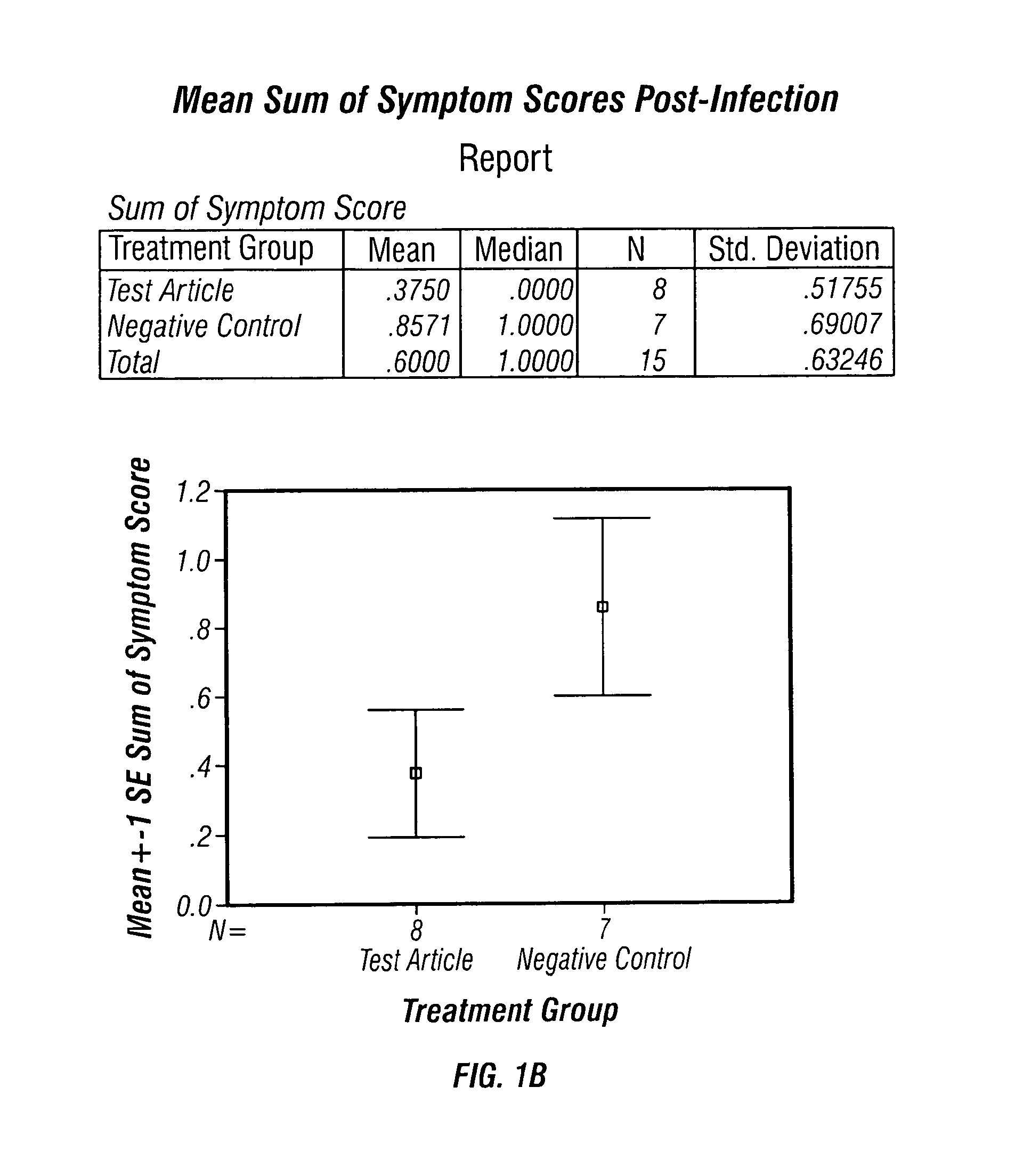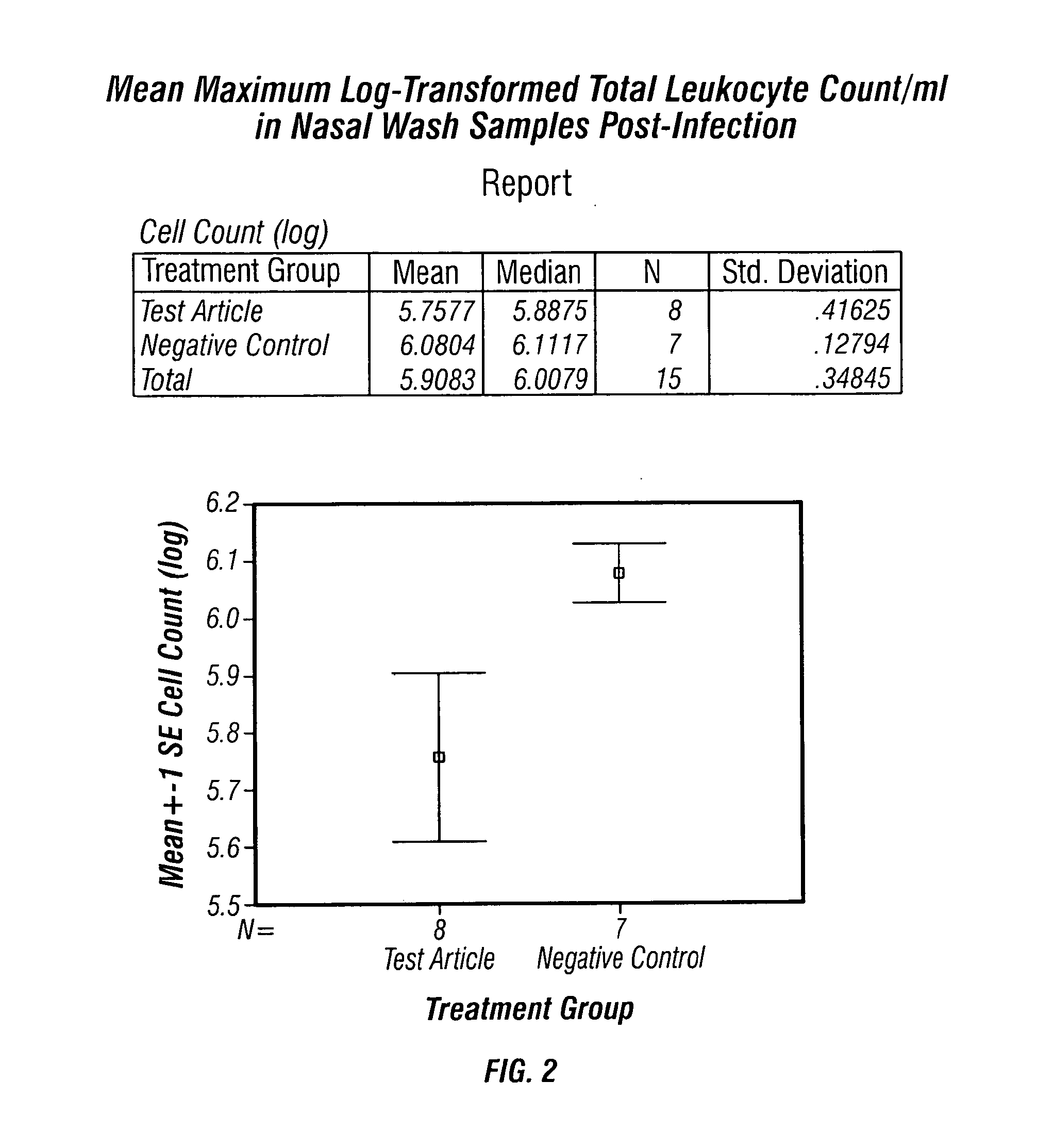Method to treat inflammation
a technology for inflammation and treatment, applied in the field of inflammation treatment, can solve the problems of difficult to fully understand, no direct or general means to treat inflammation, and none of the effects discloses or suggests
- Summary
- Abstract
- Description
- Claims
- Application Information
AI Technical Summary
Benefits of technology
Problems solved by technology
Method used
Image
Examples
example 1
[0039]TISF derived from cultured bovine thymic cells was supplied as a freeze dried material and was used as a saline solution containing one microgram of protein per mL of saline solution. The subjects used were Mustella putorius faro, an outbred albino ferret strain. The subjects were all males, weighing about 600-1100 g on the first day of treatment, and were obtained from Highgate Farm, in England. The testing of TISF in animals was conducted by a contract laboratory familiar with procedures for testing antiviral and similar pharmaceutical candidate molecules in animal models.
[0040]Each treated ferret received 1 mL of this solution subcutaneously, delivering approximately 1 microgram of TISF per animal. Control animals received vehicle without TISF added. Prior to testing, all animals were primed with influenza A / Panama / 2007 / 99 (H3N2) at a titre of approximately 106.5 TCID50 / mL, which gave 100% infection of the ferrets, when 250 microliters of the virus solution was administered...
example 2
[0045]Cells were stimulated with a solution containing 1 microgram of highly purified TISF. The cells were maintained for 24 hours post-treatment, at which time the supernatant was tested for cytokine levels using the RayBio® Mouse Cytokine Antibody Arrays 1 and 1.1 from RayBiotech. Both positive and negative controls were included in the test, and a background array was run as well: the background level of each cytokine has been subtracted from the data in FIG. 4. TISF stimulated production of at least IL-10, IL-12 (anti-inflammatory cytokines) and GM-CSF. It had no effect on TNF-α levels, and may have an inhibitory effect on MCP-1 (pro-inflammatory cytokine).
[0046]The cytokine level test was performed according to the User Manual provided by RayBiotech, Inc.
PUM
| Property | Measurement | Unit |
|---|---|---|
| weight | aaaaa | aaaaa |
| body weight | aaaaa | aaaaa |
| body weight | aaaaa | aaaaa |
Abstract
Description
Claims
Application Information
 Login to View More
Login to View More - R&D
- Intellectual Property
- Life Sciences
- Materials
- Tech Scout
- Unparalleled Data Quality
- Higher Quality Content
- 60% Fewer Hallucinations
Browse by: Latest US Patents, China's latest patents, Technical Efficacy Thesaurus, Application Domain, Technology Topic, Popular Technical Reports.
© 2025 PatSnap. All rights reserved.Legal|Privacy policy|Modern Slavery Act Transparency Statement|Sitemap|About US| Contact US: help@patsnap.com



